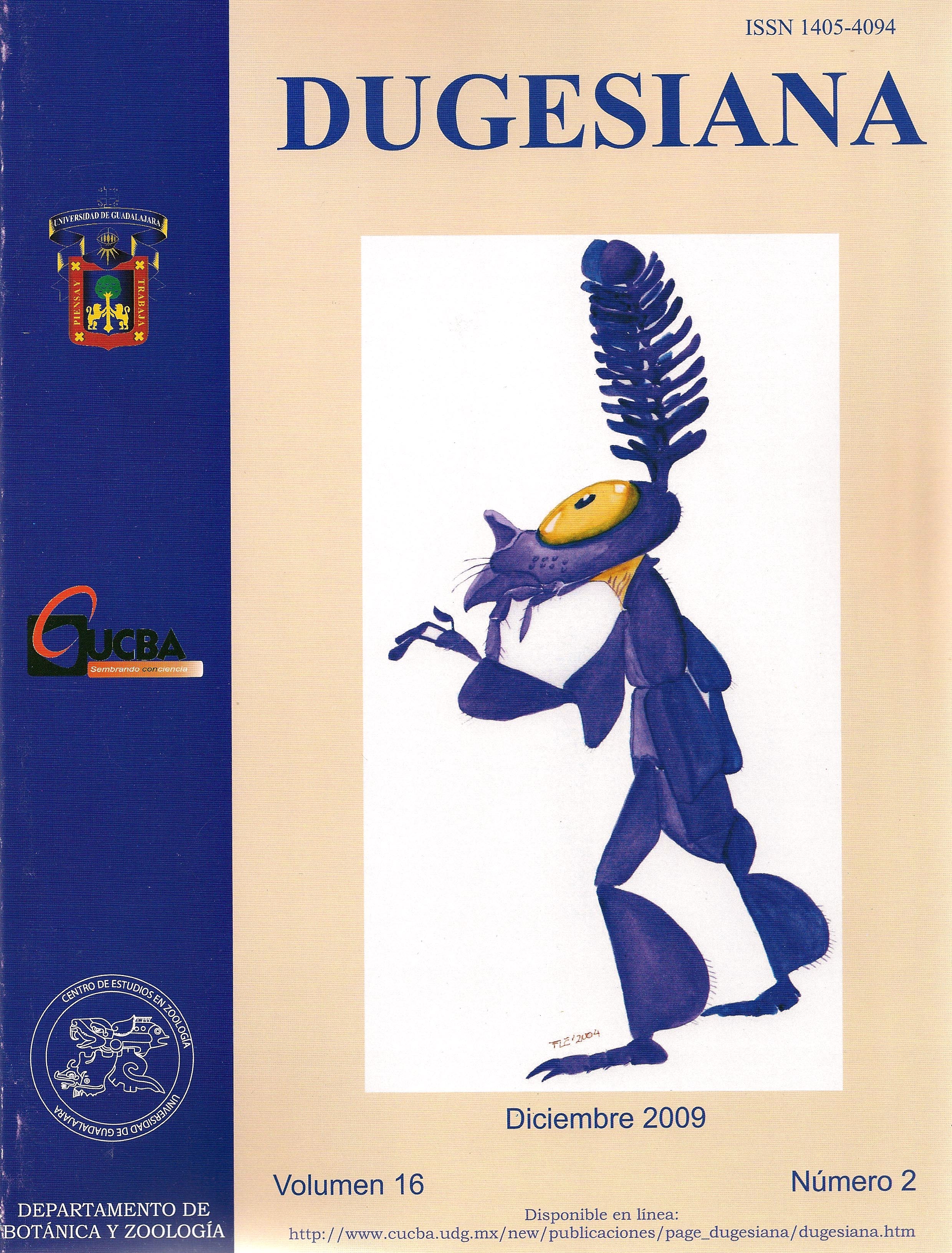TRILOBITA: Los trilobites del Marianense (Cámbrico inferior) de Alanís (Sevilla), Suroeste de EspañaLos trilobites del Marianense (Cámbrico inferior) de Alanís (Sevilla), Suroeste de España
DOI:
https://doi.org/10.32870/dugesiana.v16i2.3930Keywords:
Alanís, Cámbrico Inferior, Capas de Saukianda, Marianiense, Tafonomía, Trilobites.Abstract
Este trabajo tiene un doble objetivo: por una parte se ofrece una breve reseña histórica de los principales investigadores que han colectado y estudiado los niveles fosilíferos de los yacimientos de Alanís de la Sierra en Sevilla (España), y por otra parte mostrar el registro fosilífero mas significativo de las denominadas “Capas de Saukianda” del Marianense (Cámbrico Inferior) de esos enclaves. Se trata de uno de los yacimientos con trilobites del Cámbrico Inferior de la Península Ibérica que reviste un especial interés tanto por las características de endemismo de sus trilobites como por los aspectos tafonómicos singulares presentes en los mismos. Dichos yacimientos de la localidad sevillana de Alanís muestran asociaciones de fósiles compuestas fundamentalmente por trilobites, equinodermos, braquiópodos y arqueociatos. La edad de estas pizarras fosilíferas es Marianiense, siendo uno de los más antiguos registros documentados de invertebrados marinos de la Península Ibérica relacionado con los yacimientos cámbricos portugueses de Vila Boim y los que se encuentran en el Norte de Marruecos. Los géneros de trilobites mas importantes que caracterizan este intervalo son: Delgadella, Serrodiscus, Perrector, Eops, Rinconia, Alanisia, Atops, Hicksia, Termierella, Lusatiops, Triangulaspis, Andalusiana, Saukianda y Gigantopygus.Downloads
Published
2015-09-22
Issue
Section
Artículos
License
1. Proposed policy for open access journals
Those authors who have publications with this journal, accept the following terms:
- The authors will retain their copyright and will guarantee to the journal the right of first publication of their work, which will be simultaneously subject to the Creative Commons Recognition License, which allows third parties to share the work whenever their author is indicated and His first publication is this journal.
- Authors may adopt other non-exclusive license agreements to distribute the version of the published work (eg to be deposited in an institutional telematic file or published in a monographic volume) provided the initial publication is indicated in this journal .
Authors are encouraged and encouraged to disseminate their work through the Internet (eg in institutional telematic files or on their web page) before and during the sending process, which can produce interesting exchanges and increase appointments Of the published work. (See The effect of open access).
2. Proposed policy for journals that offer open deferred access
Those authors who have publications with this journal, accept the following terms:
- The authors will retain their copyrights and will guarantee to the journal the right of first publication of their work [SPECIFY PERIOD OF TIME], which will be simultaneously subject to the Creative Commons Recognition License that allows third parties to share the work always That its author and his first publication be indicated this journal.
- Authors may adopt other non-exclusive license agreements to distribute the version of the published work (eg to be deposited in an institutional telematic file or published in a monographic volume) provided the initial publication is indicated in this journal .
- Authors are encouraged and encouraged to disseminate their work through the Internet (eg in institutional telematic files or on their web page) before and during the sending process, which can produce interesting exchanges and increase appointments Of the published work. (See The effect of open access).




